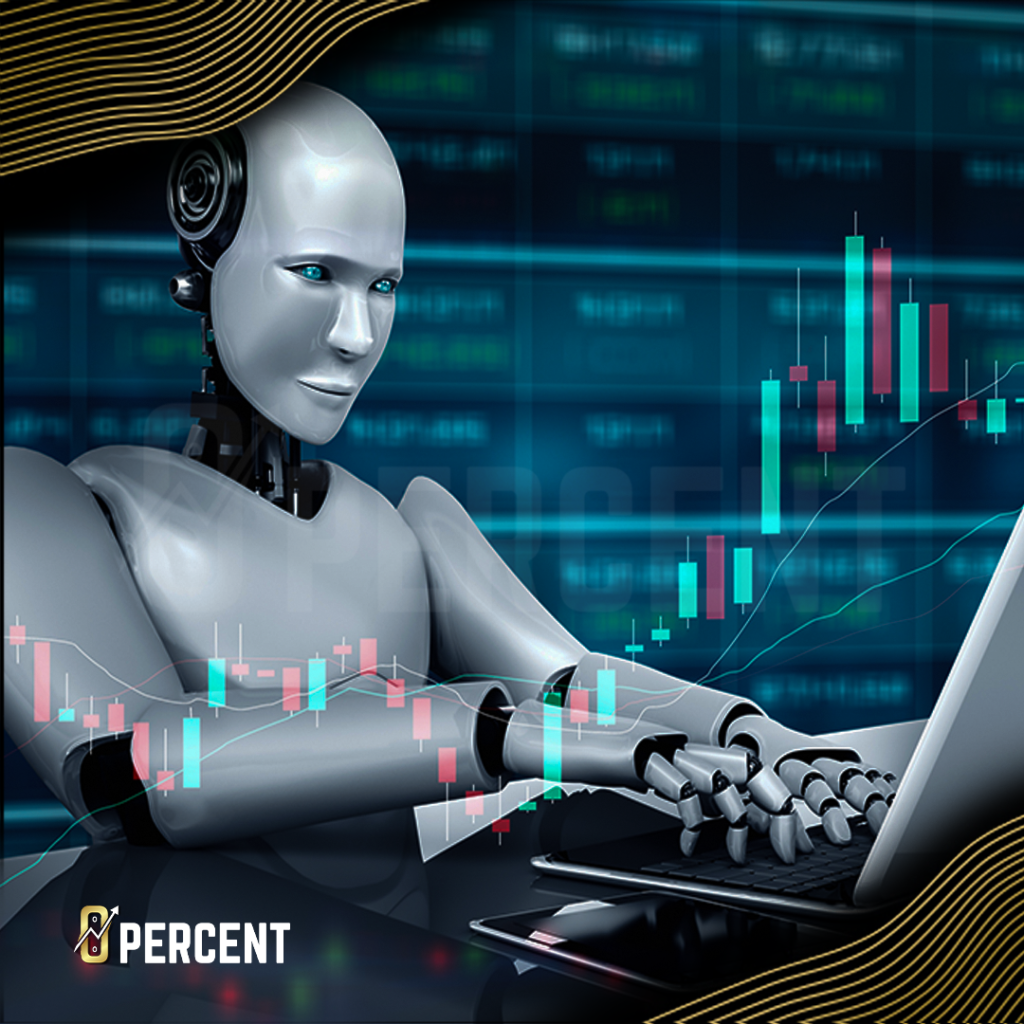
Jeff Sekinger
Jeff Sekinger Founder & CEO, 0 Percent Who is Jeff Sekinger? Visionary Trailblazer Sekinger has been in the financial industry for over a decade. Starting
Forex is the most liquid market in the world, with a daily turnover of approximately $5 trillion. Forex, short for foreign exchange, is a decentralized financial market wherein individuals, businesses, corporations and large institutions alike, otherwise known as market participants, all trade on forex daily with the hopes of turning a profit. This dynamic market, which is open 24 hours per day, 5 days per week, is very complex, and there is no dearth of tools and strategies whose aim is to help traders achieve success on this market.

What Is Technical Analysis
Technical analysis is a commonly used approach to financial markets, including forex, and is used to forecast future price movements by analyzing current and past market data. Technical analysis is based on the assumption that market patterns and market trends are identifiable and can be utilized to make more accurate and profitable trades. Technical analysis also involves staying up to date on economic and geopolitical global events. Natural disasters or other breaking news events can affect currency prices. Given that forex is a market of currencies, staying up to date with what is happening around the world can be just as important as engaging in accurate technical analysis.
Artificial Intelligence & Algorithmic Trading Bots
Recently, algorithmic trading bots, or algo bots, have become increasingly popular and more widely used among traders and businesses as a tool to help execute analysis based trading strategies, as well as risk management strategies, more efficiently and effectively.
Algo bots utilize artificial intelligence and can therefore hold and recall an immense amount of data. Algo bots have the capacity to analyze large amounts of market data quickly and accurately, and some can even be connected to the internet, affording them the capacity to keep up to date with current events — an especially pertinent tool as it relates to forex trading. While algo bots are not perfect, and do not ensure profitable returns, they can be an immensely powerful tool in the pursuit of financial profit. Algo bots can oftentimes identify patterns and trends that may be difficult for human traders to spot, and this can overall lead to more profitable trading decisions.
Another advantage of algo bots is their ability to execute trades automatically, based on predefined criteria. Traders can program their bots to follow rules-based trading strategies, which can be executed by the algo bots without human intervention. As a general rule, human oversight is recommended, as algo bots aren’t perfect, and while they have the potential to reduce or mitigate risks associated with trading, they cannot eliminate risk.
A Technical Look Into Technical Analysis
There are a plethora of different technical analysis tools and indicators that traders and institutions can use when trading on the foreign exchange and other markets. Some of the tools and indicators include moving averages, trend lines, and oscillators. There are many other tools and indicators that we will cover in this article, but those three items offer a broad overview of technical analysis. Algorithmic trading bots can be programmed to use any and all of the most well known tools and indicators, and make trades based on those effective items.
Trend following is perhaps the most popular technical analysis approach used by traders and algorithmic trading bots alike. Trend following involves identifying and following market trends. While this may be the simplest analysis, it is oftentimes the most effective, as trends can sometimes be long lasting.
Another popular technical analysis approach used by traders and algo bots alike is mean reversion. This strategy involves identifying markets that have moved too far from their average price, and making trades based on the expectation that prices will eventually revert, or return to the mean. Mean reversion can be an effective strategy in markets that are prone to overreactions and are likely to correct course over time. This applies to forex, as oftentimes breaking news and current events can cause markets to overreact, only to revert back toward the mean at a later date.
Another popular technical analysis approach used by algorithmic trading bots is mean reversion. This strategy involves identifying markets that have moved too far from their average price, and making trades based on the expectation that prices will eventually revert back to the mean. Mean reversion can be an effective strategy in markets that are prone to overreactions and are likely to correct themselves over time.
This broad overview of technical analysis is exactly that — a broad overview. Technical analysis goes far deeper, and that is precisely why using algo bots can be such an important tool in the trader’s pursuit of financial profit. By using artificial intelligence and algorithmic bots, and machine learning techniques, algo bots can analyze tremendous amounts of market data, and utilize numerous technical analyses approaches simultaneously. However, it is important to note that algo bots are a tool, and should not be relied upon exclusively, as human oversight and intervention is still required in order to increase chances of success.
Chart Types & Patterns
Chart types and patterns are an essential part of technical analysis in forex as well as other markets. Technical analysts use charts to visualize market data, identify trends and patterns, and make trading decisions based on those insights. There are several different chart types that are commonly used in technical analysis, including candlestick charts, line charts, and bar charts.
Candlestick Charts
Candlestick charts are a popular chart type used in technical analysis. This chart provides a more detailed look into price movements than other chart types. Candlestick charts show the opening and closing prices, as well as the high and low prices for a given period. They also use color codes to show whether the closing price was higher or lower than the opening price. This type of chart can also be used to identify key price levels and patterns.
Line Charts
Line charts are a more simple chart type that display the closing price of an asset over time. Line charts don’t show the opening price, but rather simply a basic overview of price movements without as much detail as candlestick charts. Line charts are helpful for identifying long term trends and support and resistance levels.
Bar Charts
Bar charts are another simpler type of chart used in technical analysis. Bar charts display the opening, high, low, and closing prices for a given period. Bar charts provide more detailed information than line charts, but less detail than candlestick charts. This type of chart can be used to identify key price levels and patterns, such as double tops and bottoms.
Support & Resistance
Support and resistance levels are key concepts in technical analysis. A support level is a price level where demand for an asset is strong enough to prevent it from falling further. Resistance levels are price levels where supply for an asset is strong enough to prevent it from rising further. Support and resistance levels can be identified by looking at chart patterns and previous price movements.
Moving Averages
Moving averages are another key tool in the technical analysis tool belt. Moving averages can help traders identify trends and potential support and resistance, and are calculated by taking the average price of an asset over a determined period of time. Moving averages are also used to generate trading signals, for example buy and sell, when the moving average moves above or below the current trading price.
Artificial Intelligence and Forex
Identifying potential trading opportunities is an essential aspect of forex trading. Forex traders must analyze market data, identify patterns and trends, and translate all of that data into financially profitable trading decisions. Artificial intelligence and algo bots can be powerful tools to help traders succeed.
AI can be utilized to execute trades based on vast amounts of data and signals. Algorithms can also learn from historical data and market behavior to better forecast future outcomes. Algo bots can automate the process of identifying trading opportunities and executing trades based on these opportunities quickly and logically, without succumbing to human emotions. While algo bots can do all of this automatically and without human intervention, it would be wise to monitor and intervene over your trading bots regularly.
Not only can algo bots analyze vast amounts of data, they can also be programmed to use a wide range of technical indicators to identify potential trading opportunities. As an example, algo bots can use moving averages, Bollinger Bands, and other indicators to help the trader behind the machine. Algo bots can also identify catalysts for market movements based on current events, if the algo bots are connected to the internet and programmed to analyze current events.
A big advantage of using AI on the foreign exchange is the bots’ ability to process data quickly. Forex is a very liquid market and movements can oftentimes be rapid. Algo bots likewise move rapidly and keep with the pace of the market. While humans also have the potential to analyze vast amounts of data in real time, algo bots carry the ability to process that data much more quickly and can do so without the emotional input / output that humans so often do. Moreover, algo bots can work 24 hours per day, whereas humans cannot.
Identifying potential trading opportunities is a primary aspect of trading, whether on the foreign exchange or any other market. AI and algorithmic trading bots can be valuable tools helping traders potentially achieve success.
Trend Analysis
Trend analysis is a key aspect of trading on the foreign exchange. It involves identifying the direction as well as the strength of price movements over time. There are several methods of trend analyses, including momentum indicators, technical analysis, fundamental analysis, sentiment analysis, inter-market analysis, and analyzing uptrends and downtrends.
Momentum indicators are used to measure the strength of a trend, and can help traders identify potential reversal points. Examples of momentum indicators include the Relative Strength Index (RSI), Moving Average Convergence Divergence (MACD), and Stochastic Oscillator.
Technical analysis involves using charts and other tools to help identify patterns and trends in price movements. Some examples of chart patterns include head and shoulders, triangles, as well as double tops or bottoms. Technical analysis also involves the use of moving averages.
Fundamental analysis is more detailed and dynamic than technical analysis. Fundamental analysis involves the analysis of economic and financial data to help identify changes to currency prices. Factors that may affect currency prices include GDP, inflation rates, interest rates, as well as geopolitical events. Fundamental analysis provides detailed insights into more long-term trends in global currency prices.
Sentiment analysis involves analyzing the behavior, or “sentiment” of other traders and market participants. Sentiment analysis can involve monitoring trends on social media, current events, and other sources of information in order to help gauge market sentiment.
Inter-market analysis is a type of analysis whereby the relationships between different markets are analyzed. These markets can be the stock market, currency markets, among others. Inter-market analysis can provide insight into broader market trends and help traders or algo bots identify potential opportunities based on the correlation between different markets.
Uptrends and downtrends are a key aspect of trend analysis. While seemingly self explanatory, uptrends and downtrends offer dynamic insight. Uptrends occur when prices move higher over time; downtrends occur when prices move lower over time. Traders and algo bots alike can use a range of tools and techniques to identify uptrends and downtrends.
Trend analysis is one of various primary aspects of forex trading which involve using a range of methods and tools to identify potential trading opportunities. By using the above mentioned methods, among others, traders can potentially improve their chances of achieving profitable returns and can potentially take advantage of trends in currency prices.
Support and resistance levels are another major concept in technical analysis that traders use to help identify potential levels which prices may reverse. Understanding support and resistance levels is important as this data can oftentimes provide valuable information and insight into potential buying and selling opportunities.
Support level refers to the price level at which demand for a particular currency is strong enough to prevent further price decline. Resistance level refers to the price level at which the supply for a particular currency is strong enough to prevent further price increases. When a price reaches a support level, it is more likely to bounce up. Conversely, when a price reaches a resistance level, it is more likely to bounce down.
Traders can use support and resistance levels in a number of ways. For example, a trader may look to buy a currency when it reaches a support level, on the assumption that it is likely to bounce back up. Similarly, a trader may look to sell a currency when it reaches a resistance level, on the assumption that it is likely to bounce back down.
Support and resistance levels can also be used to identify potential areas for placing stop-loss orders. A stop-loss order is an order placed with a broker to buy or sell a currency if the price reaches a certain level. By placing a stop-loss order at a support or resistance level, traders can help limit their potential losses in the event that the price moves against them.
Technical analysis is a comprehensive and highly dynamic way of understanding and engaging with any market, including forex. Algorithmic trading bots can help immensely in this regard, as they have the capacity to retain and execute informed and accurate trades that have the potential to accrue profitable returns. Because technical analysis is so in-depth and comprehensive, algo bots can be an immensely powerful and effective tool to increase a market participant’s chances of success. By leveraging artificial intelligence and machine learning, these bots can help traders analyze vast amounts of data and potentially identify opportunities that may have others gone unnoticed.
Additionally, algo trading bots can help traders better understand technical indicators and patterns, providing insights that might be difficult to see with the human eye. By automating the trading process, these bots can also help traders eliminate human emotion from their trading decisions, which can often cloud judgment and lead to less than ideal decision-making.

Jeff Sekinger Founder & CEO, 0 Percent Who is Jeff Sekinger? Visionary Trailblazer Sekinger has been in the financial industry for over a decade. Starting

Angel Alvarez Funding, 0 Percent Who is Angel Alvarez? From SpaceX to 0 Percent Angel is a remarkably well rounded individual who has had a

Abhay AnandProduct, 0 Percent Who is Abhay Anand? Title One Test Title Two Test Test
Sign up for our newsletter to stay in the loop.
Sign up to receive news & updates!
Sign up to receive news & updates!